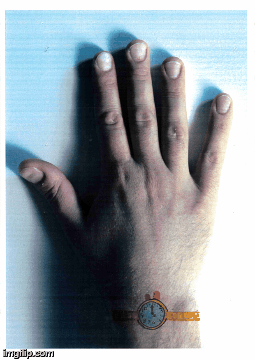Bibliography:
Albert, D. and Loewer, B. (1988), Interpreting the Many Worlds Interpretation, Synthese,
Alonso, M. (1980) “Antonio Machado Poeta en el Exilio”, Antroporos: Ambitios Literarios
Barrett, J. A. (2011) Everett’s Pure Wave Mechanics and the Notion of Worlds, European Journal for Philosophy of Science, 1: 277–302.
Butterfield, J. (2001) The End of Time? All Souls College: Oxford
Cage, J (1961) “Where are we going? And what are we doing?”, in Silence (Wesleyan University Press, 1961), pp. 220–222.
Cassidy, D. (1992), Uncertainty: THe Life and Science of Werner Heisenberg; New York: W.H. Freeman
Choksi, N. and Cummins , A. (2016) “In Memory of the Last Sunset”; 20th Sydney Art Biennale
Conover, E. (2016) Information Is Physical, Even In Quantum Systems, Study Suggests, Science News: Vol. 189
Hansun, K. (1890) “Hunger” Penguin Book, 1988
Hauser, C. and Khan, I. (2016) “‘Afghan Girl’ in 1985 National Geographic Photo Is Arrested in Pakistan”; Asia Pacific: The New York Times
Hutton, W. (2016) Only fundamental social change can defeat the anxiety epidemic; The Guardian: Opinion Mental Health
Insolera, M. (2015) “Surviving Greece”; La Caixa Forum, Madrid, 2015
Jha, A. (2013), What is Heisenberg’s Uncertainty Principle? The Guardian
Korsgaard, M. C. (2012) Kant: Groundwork of the Metaphysics of Morals; Cambridge: Texts in the History of Philosophy
Nauman, B. (2015) ” Life, Death, Love, Hate, Pleasure, Pain”; La Biennale di Venezia – Biennale Arte 2015
Paul, C. (2003) Digital Art, London: Thomas and Hudsen
Pippin, S. (1999) Laundromat – Locomotion: An Artists’ Book; London: Verlag der Kunst
Sethaseree, T. (2017) “Heads or Tails? Uncertainties and Tensions in Contemporary Thailand”; Sundaram Tagore Gallery: New York, 547 West 27th Street, Oct 12th – Nov 4th 2017
Spiegelhalter, D. et al (2011) “Visualizing Uncertainty About the Future” Science 09 Sep 2011:
Vol. 333, Issue 6048, pp. 1393-1400 DOI: 10.1126/science.1191181
Dorment, R. (2001), A Deconstructed Life; The Daily Telegraph
Wiseman, H. (2012), Explainer: Heisenberg’s Uncertainty Principle; The Conversation
Websites:
http://justinmortimer.co.uk/2012.html
https://www.artangel.org.uk/break-down/michael-landy-in-conversation-with-julian-stallabrass/
http://www.bbc.com/culture/story/20160713-michael-landy-the-man-who-destroyed-all-his-belongings
http://www.exactlywhatistime.com/physics-of-time/the-arrow-of-time/
https://www.tate.org.uk/art/artists/bruce-nauman-1691/long-read/raw-material
https://www.volcanodiscovery.com/earthquakes/2018/10/07/00h11/magnitude6-HaitiRegion-quake.html
https://www.tate.org.uk/whats-on/tate-modern/exhibition/unilever-series/unilever-series-miroslaw-balka-how-it
https://www.tate.org.uk/whats-on/tate-britain/exhibition/turner-prize-2001/turner-prize-2001-artists-martin-creed
http://anishkapoor.com/100/blood-mirror
http://www.artnet.com/artists/roman-opalka/carte-de-voyage-detail-2875545-2878714-a-HWRwg7H5Dw7Q4qIxVhR-iw2
https://freemasonry.network/famous-freemasons/famous-freemasons-alphabetical-list/william-hogarth-a-freemason/
https://www.theguardian.com/culture/2003/jan/11/art
https://artsandculture.google.com/asset/peasant-wedding/hgGvote2WI8P3w
https://www.louvre.fr/en/oeuvre-notices/beggars
https://www.theguardian.com/artanddesign/2013/jun/24/ls-lowry-tate-Britain
https://www.tate.org.uk/art/artworks/quinn-no-visible-means-of-escape-iv-t07238
https://artblart.com/tag/justine-khamara/
https://news.sky.com/story/banksy-reveals-he-meant-to-shred-entire-1m-girl-with-balloon-painting-11528598
https://www.google.co.uk/search?q=john+cage+silence&safe=strict&hl=en&source=lnms&tbm=isch&sa=X&ved=0ahUKEwjhh4bj-uLeAhVqBcAKHdDvCIcQ_AUIDygC&biw=1440&bih=816#imgrc=7UJpu0GfdhaycM:&spf=1542716494014
http://kehindewiley.com/works/haiti/
http://www.sothebys.com/en/auctions/ecatalogue/2018/contemporary-art-evening-auction-n09858/lot.1.html
https://www.phillips.com/detail/MARK-BRADFORD/UK010616/6
https://www.independent.co.uk/news/world/world-history/mona-lisa-gherardini-book-people-and-the-painting-martin-kemp-and-giuseppe-pallanti-florence-a7916991.html
https://www.thoughtco.com/waiting-for-godot-quotes-741824
https://www.vice.com/en_uk/article/dpk8yw/edward-burtynsky-shows-us-impending-e
https://www.telegraph.co.uk/news/celebritynews/3122144/Kate-Moss-gold-statue-unveiled-at-British-Museum.htmlnviro-apocalypse-in-high-definition
Maurizio Cattelan: “America”
The cameras that record the moment of their own destruction
https://news.artnet.com/market/frieze-artists-london-2015-340163
https://www.artsy.net/artwork/leandro-erlich-laundry
https://mocanomi.org/2006/10/bruce-nauman/
Roman Opałka, Polish painter 1931-2011
https://www.rct.uk/collection/405943/a-self-portrait
https://www.artslant.com/global/artists/show/5638-roman-opalka?tab=PROFILE
http://www.repeatingdecimal.com/roman-opalka/
https://www.tehchinghsieh.com/artworks
https://www.moma.org/calendar/performance/322
https://www.saatchigallery.com/artists/artpages/greta_alfaro_in_ictu_oculi.htm












 Landy stands in front of the exhaustive catalogue of 7,227 of his belongings – in the end,all that remained was his blue boiler suit (Credit: Michael Landy/Parisa Taghizadeh)
Landy stands in front of the exhaustive catalogue of 7,227 of his belongings – in the end,all that remained was his blue boiler suit (Credit: Michael Landy/Parisa Taghizadeh)



















































